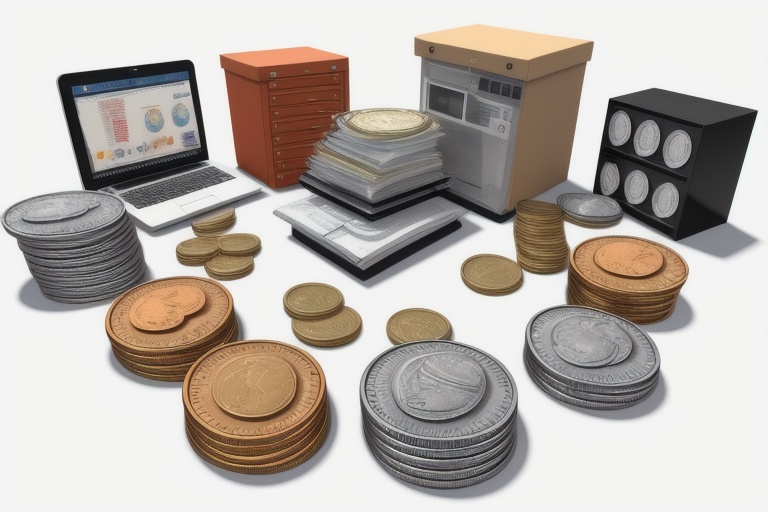Coin collecting is a hobby that captivates many thanks to its rich amalgamation of history, art, economics, and craftsmanship. Among the finer details admired by collectors is the varied design of coin edges—especially the reeded edge, a feature present on numerous denominations including the U.S. dime, quarter, and half dollar. Understanding the origin and purpose of the reeded edge, as well as its function in the broader context of coin making and collecting, offers enthusiasts an appreciation for the meticulous craft of minting.
Coin collecting is a hobby that captivates many thanks to its rich amalgamation of history, art, economics, and craftsmanship. Among the finer details admired by collectors is the varied design of coin edges—especially the reeded edge, a feature present on numerous denominations including the U.S. dime, quarter, and half dollar. Understanding the origin and purpose of the reeded edge, as well as its function in the broader context of coin making and collecting, offers enthusiasts an appreciation for the meticulous craft of minting.
The Function and History of the Reeded Edge
The reeded edge—a pattern of grooves encircling a coin's perimeter—is not mere ornamentation. It serves the vital role of deterring unscrupulous individuals from the illegal practice of "coin clipping." Throughout history, when coins were often struck in precious metals such as gold and silver, it wasn't uncommon for people to shave off small portions of the coins to accumulate enough metal to sell or create new coins. Reeded edges were a safeguard against this theft, clearly signaling if a coin had been tampered with by the absence or wearing down of the pattern.
The Process of Creating Reeded Edges
The process of adding reeded edges begins in the minting phase. A metal collar with grooves on the inside is placed around the blank coin, and when the coin is struck by the dies—containing the obverse (heads) and reverse (tails) designs—under high pressure, the metal is squeezed into the reeded pattern of the collar, transferring the design onto the edge.
For certain coins, like those in the Presidential dollar series, the edges are detailed with incuse lettering added post-striking through the use of a milling machine that engraves designs onto the edge, offering an added dimension to the process.
A Spectrum of Edge Designs
Coin edges come in a variety of designs, each with its own significance and allure. Plain edges are smooth and are often seen on coins of lower denominations. Some coins bear distinctive inscriptions or decorative motifs impressed or raised on their edges. Interrupted reeding, where sections of reeding alternate with plain areas, and textured patterns like the herringbone create visual and tactile interest.
Beyond Reeding: Other Edge Variations
Coins' edges can bear intricate designs, ranging from serrated edges—comprising V-shaped grooves that ring the coin—to slant reeded edges where the grooves are cut at an angle, delivering a unique visual appeal. Such distinctions in edge design can enhance the grip and make coins easier to handle and stack.
The Importance of Coin Grading and Condition
Collectors highly prize coins in mint state condition—those that have never been circulated. By evaluating the level of preservation, grading helps determine a coin's market value, rarity, and desirability. Coin grading is an exacting science, one that involves assessing the levels of wear, contact marks, and luster.
Mint Errors and Authenticity
Understanding mint errors, which refer to coins bearing anomalies from the minting process, is often a gateway to the most engaging and lucrative aspects of the hobby. Mint errors such as off-center strikes, double dies, or misprints inject a level of uniqueness and rarity into a coin, potentially increasing its value.
Equally crucial for collectors is the skill of authenticating coins, ensuring that one's collection comprises genuine articles, not fakes or duplicitous replicas. Techniques for authentication may involve close examination of the coin's weight, metallic composition, and design elements.
Staying Informed and Connected
Successful coin collecting relies on continual learning and networking within the numismatic community. Keeping abreast of the latest news, trends, and scholarly research enriches the collector's experience. Engaging with this community through clubs, online forums, and conventions can provide essential resources and camaraderie on one's numismatic journey.
Preserving Stories Through Coin Collecting
Every coin carries a story, presenting us with the opportunity to touch a piece of history. Coin collecting is as much about cherishing these narratives as it is about the pursuit of rare and valuable specimens. Collectors endeavor to ensure that the knowledge embedded within each coin—the tales of ancient empires, the insight into long-forgotten economies, the artistry of bygone mints—is passed on to future generations.
As we delve into the layers of history and design intricacies that each coin presents, we may come to realize that the world of numismatics offers far more than just financial benefit—it provides a tangible link to the past and a palpable sense of continuity with human civilization. Through the art of collecting, we preserve a heritage that transcends time.
In summary, whether one is captivated by the nuanced security feature of the reeded edge, the intricate patterns of different coin edges, or the broader spectrum of numismatic knowledge—from grading and authentication to mint errors and historical context—collecting coins is an endlessly engaging pastime. It's a pursuit that beckons with both the thrill of the hunt and the promise of preserving a piece of history in the palm of one's hand. As collectors, we are the custodians of these metallic storytellers, and it is our passion, curiosity, and dedication that will ensure the narrative of coins continues to unfurl for generations to come.
Information for this article was gathered from the following source.


